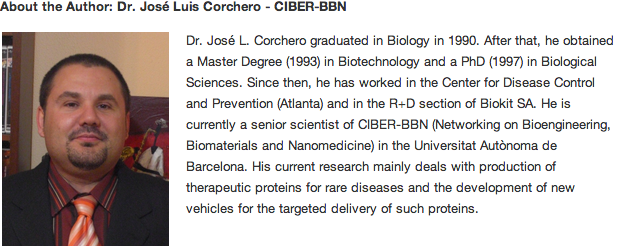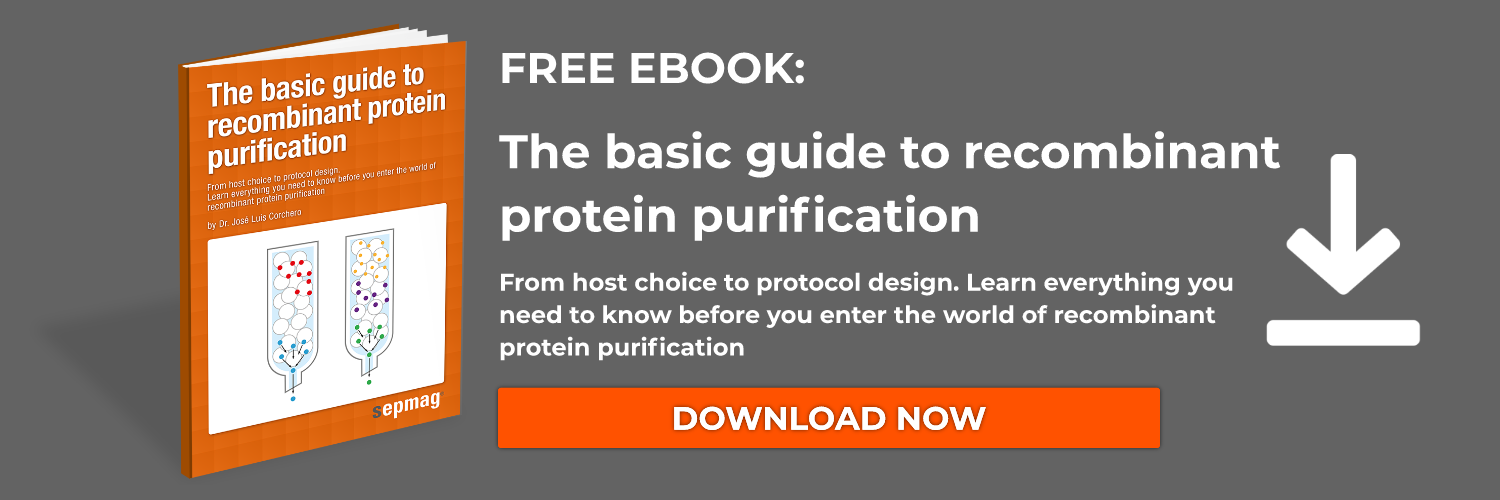The host in which a recombinant protein is produced doesn’t naturally include the gene of this protein in its genome. Therefore, this gene needs to be introduced in a process called molecular cloning. Successful cloning of a gene requires several elements, which are discussed in our protein purification handbook.

First, we need a DNA fragment containing the gene of the protein of interest. It will usually be a restriction fragment, although sometimes PCR will be performed in order to create a fragment that contains the gene.
This post is an excerpt from our protein purification handbook, which explains the basics of recombinant protein purification. Download The Basic Guide to Recombinant Protein Purification here:
The second important element is the vector, a DNA molecule into which the gene will be inserted and that will serve as a vehicle for the genetic information. Any piece of DNA could be used as a vector, as long as it includes an origin of replication in order to be able to replicate following entry into the host cells. Bacterial plasmids and genomes of certain viruses (such as bacteriophages and baculovirus) are the most common vectors, since they can replicate independently from the host cell in which they are introduced. This enables a high amplification of the recombinant DNA, so it can be replicated in a greater number of copies than the chromosomal DNA.
Markers as a control tool
Third, it is necessary to have a marker to differentiate the hosts that have incorporated the gene of the recombinant protein (transformant individuals) from the hosts that haven’t. This is because the efficiency of the process can be relatively low.
Several methods exist for that purpose, although the most common one tends to select conditions in which the vector confers a selectable phenotype, such as resistance to antibiotics. By accompanying the introduced gene with another gene conferring resistance to antibiotics, by applying this antibiotic in the culture medium, we will select those host cells that have incorporated the vector and therefore, that will express the recombinant protein. Two examples of these genes are ampR y tetR, which confer resistance to ampicillin and tetracycline, respectively.
Selection can also be performed by using nutritional requirements as a marker, or by directly detecting the presence of the gene (through colony hybridization) or of the protein (through specific antibodies).
The importance of promoters
One key element to control recombinant gene transcription is the promoter, the DNA region before the gene that regulates its expression. The promoter can be constitutive (always active), although inducible promoters are more frequently used in order to control gene expression. The choice of the promoter will depend upon several aspects, like the toxicity of the recombinant protein for the producing cell, for example.
Another element that is commonly included in current expression vectors is DNA regions encoding for different tags (that will be expressed in frame with our protein and that will facilitate its purification).
The ideal vector for the production of recombinant proteins should incorporate all these elements that have just been discussed. There are many options, since there is a variety of promoters, plasmids and markers, but a specific study for each case will allow us to optimize the process and develop it under the best conditions.
Did you find this post interesting? You can check this related post in order to learn more about protein purification:





